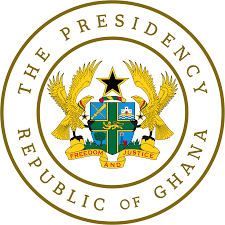Zimbabwe: ‘Miracle’ HIV Shot Rollout in Zimbabwe Sparks Debate

Zimbabwe is among 10 nations rolling out lenacapavir, a twice-yearly HIV prevention shot. Experts call it a breakthrough but locals question its cost, safety and accessibility.
Lenacapavir, the first twice-yearly HIV prophylactic in the world, is set to be rolled out in Zimbabwe, one of 10 countries selected for the initial rollout of the injectable drug.
“We are excited to announce that Zimbabwe was selected as one of the 10 countries globally to roll out lenacapavir, a breakthrough development in the fight against HIV,” the US Embassy in Harare said in a post on X.
Zimbabwe has one of the highest HIV prevalence rates in the world, with 1.3 million people living with the condition, according to figures from UNAIDS, the United Nations program on HIV/AIDS.
The southern African nation recently met the UNAIDS 95–95-95 fast-track targets, meaning that 95% of those living with HIV know their status; 95% of those who know they have HIV are on life-saving anti-retroviral treatment; and 95% of people on treatment achieve viral suppression.
Ponesai Nyika, a public health expert with extensive experience in HIV/AIDS research and program implementation, told DW that Zimbabwe has a “very solid HIV response infrastructure.”
The introduction of lenacapavir is expected to greatly boost Zimbabwe’s efforts to eradicate infections.
“Supported by strong partnerships like PEPFAR [the US President’s Emergency Plan for AIDS Relief] and other local institutions … creates a solid foundation for the introduction of lenacapavir,” Nyika added.
Zimbabwe’s rollout will target people susceptible to HIV infections — including adolescent girls as well as those who are pregnant and breastfeeding.
Why is lenacapavir considered a game changer?
The World Health Organization (WHO) hails lenacapavir as a transformative step forward in protecting people at risk of HIV.
“While an HIV vaccine remains elusive, lenacapavir is the next best thing: a long-acting antiretroviral shown in trials to prevent almost all HIV infections among those at risk,” said the WHO’s director general, Tedros Adhanom Ghebreyesus.
UNAIDS has also described the drug as a watershed moment in HIV response.
“We are talking about it as a potential miracle drug,” Angeli Achrekar, deputy director of UNAIDS, told DW.
“Right now, the fact that it is nearly 100% effective at stopping new infections is remarkable, it’s unprecedented. It’s the best thing we’ve got in the HIV response. We do not have a vaccine or cure, but this is extraordinary.”
Lenacapavir is expected to be rolled out across 120 low- and middle-income countries by 2027 and is anticipated to significantly reduce the 1.3 million new HIV/AIDS infections yearly.
Nyika told DW that the drug is seen to be “highly effective.”
“Specifically for HIV prevention, it has been seen to be highly effective, which is what makes it very exciting compared to the others. It is highly effective in preventing HIV infections if used correctly and consistently,” Nyika noted.
The drug has gone through two trials: One in sub-Saharan Africa among women and girls, the other among American gay and bisexual men and transgender women.
In both trials, the efficacy of the drug was more than 99%, raising hope for its “extraordinary” abilities in HIV prevention once fully available.
Nyika further explains that the administration of the drug only twice a year makes it even more effective as it reduces incidents of low adherence to HIV treatment.
Mixed reactions
While some Zimbabweans are upbeat about the introduction of the medication, others are more skeptical about the drug’s cost, safety and accessibility.
But Nyika argues that while lenacapavir — like every new medication — can have some side effects, “the data that we have does show that lenacapavir is very safe and well tolerated.”
He urged African countries rolling out the drug to be transparent and communicate clearly about any side effects of the drug to aid in its adoption.
Despite significant praise for the drug, its cost also aises key questions about how accessible this “miracle drug” can be.
“How is it going to help us? Because I’m sure it’s for the rich,” a Ugandan citizen told DW, reacting to the $40-dollar yearly cost of the drug, which was initially projected to cost about $28,000 (€24,197) per person annually.
The lenacapavir prevention regimen also requires an initial oral dose when starting the regimen – two tablets to be taken on the day of the first injection and two tablets to be taken on the following day.
To address cost concerns, Nyika suggests negotiations by middle- and low-income countries and possible local or regional production.
“These can help bring the cost down, but also leveraging the existing supply chain, community health system and different service delivery modules will help ensure equitable access,” Nyika noted.
Partnership with PEPFAR and the Global Fund is expected to significantly reduce the pricing of the “miracle drug.”
Kenya, Nigeria, Zambia, Uganda, Tanzania, South Africa, Eswatini and Botswana are also among those selected for the rollout by January 2026.
By Adwoa Tenkoramaa Domena



